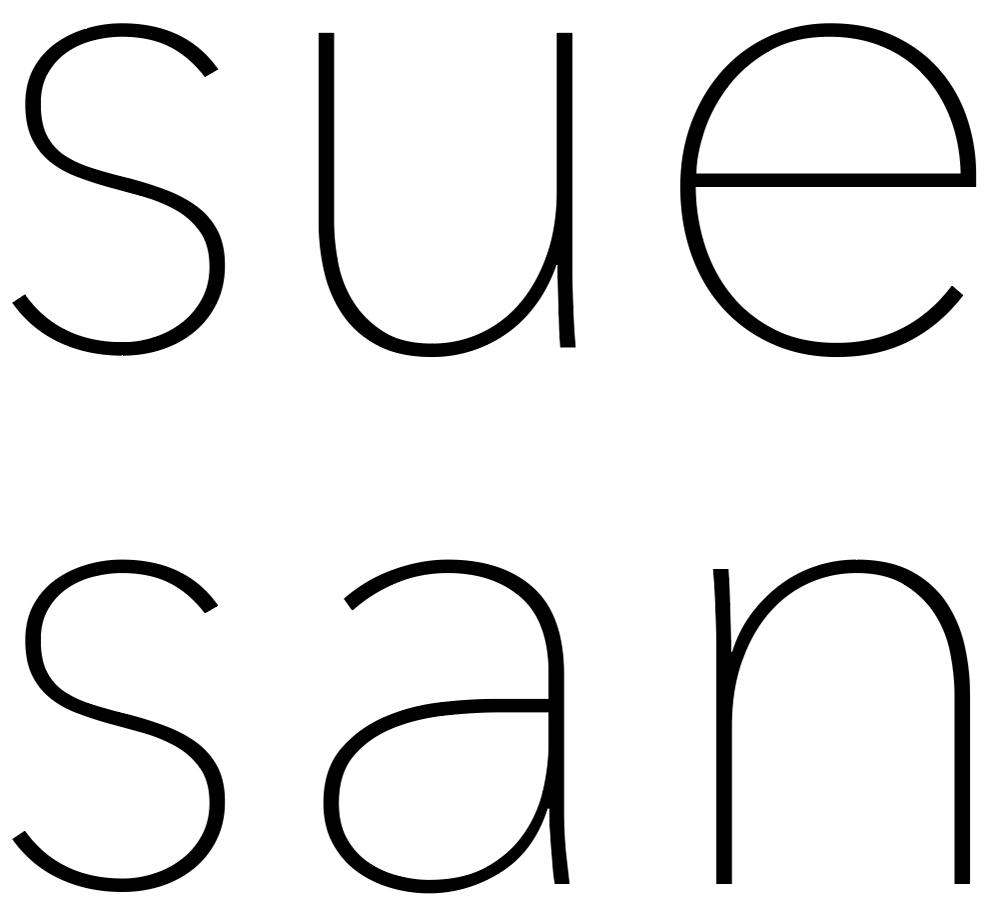how might uber freight create a better small facility experience to expand their reach and impact?
Truck drivers are the heart of the American economy - they drive about 10% of all miles and haul 14 billion tons of freight every year. Truck drivers take on a great risk to make sure we get the products we need, but the freight industry requires a lot of personal sacrifice for little reward. Uber Freight aims to empower truck drivers to grow their business by making it easier for them to book loads. What used to take several hours and multiple phone calls can now be achieved with the touch of a button in the Uber Freight app.


Over the course of 8 weeks, my project partner, Chris Datsikas, and I worked through a design sprint with Uber Freight as the client, focusing on design research to identify a new opportunity space around freight shipping and receiving facilities. Our work was confidential, so this page will contain limited information about what we did.
my role
During the research phase of the project, Chris and I conducted 11 in-context interviews together with truck drivers, carrier dispatchers, brokers, shipping facility employees, and stakeholders in analogous industries. Once we synthesized our insights, I created exploratory paper prototypes to spark conversation during subsequent interviews. We worked together to develop an implementation strategy for our uncovered opportunity area, and I led the visual design of our final deliverables.
connecting with stakeholders
We conducted in-context interviews at shipping and receiving facilities of various sizes as well as phone interviews with active drivers.
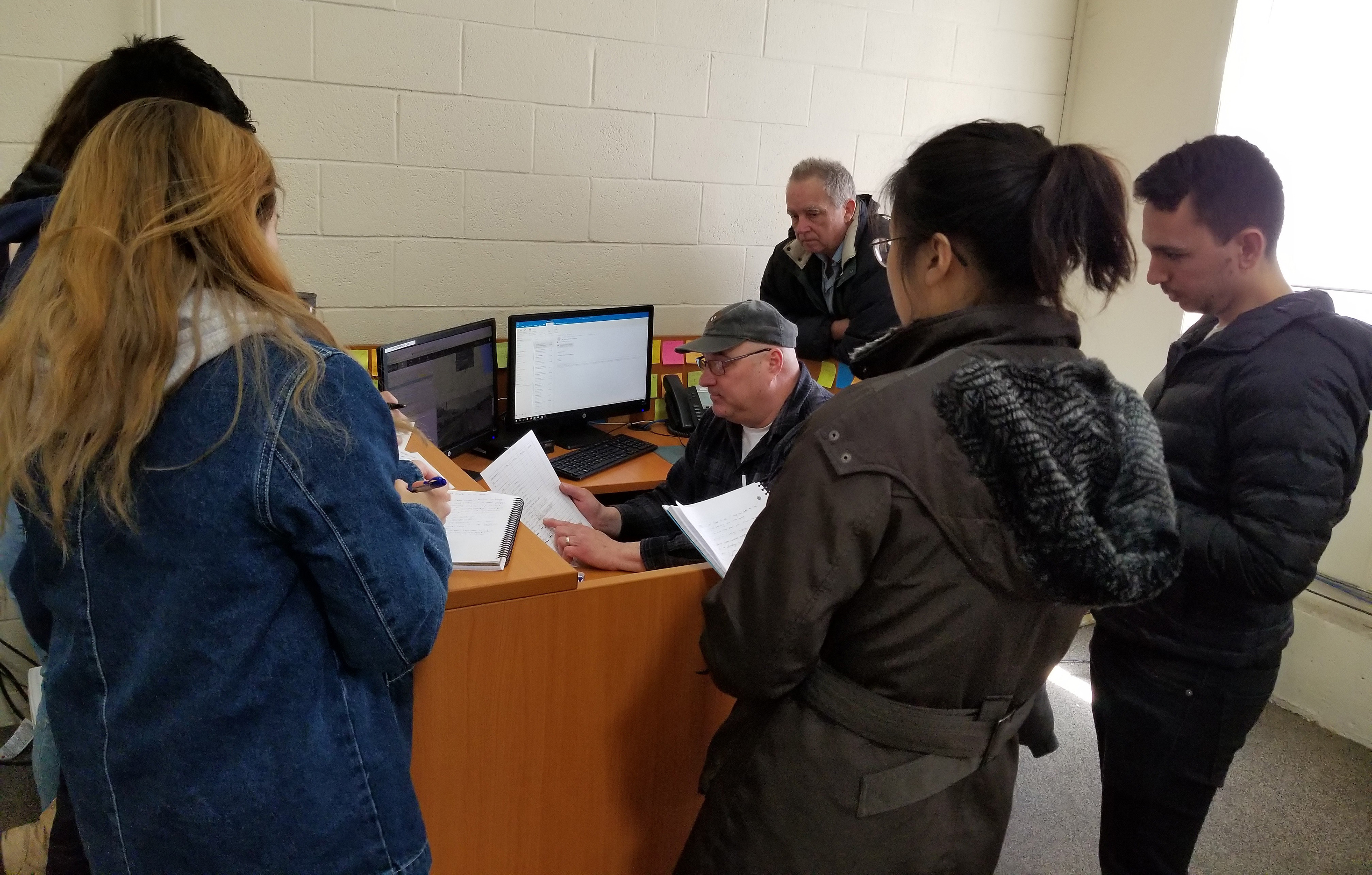

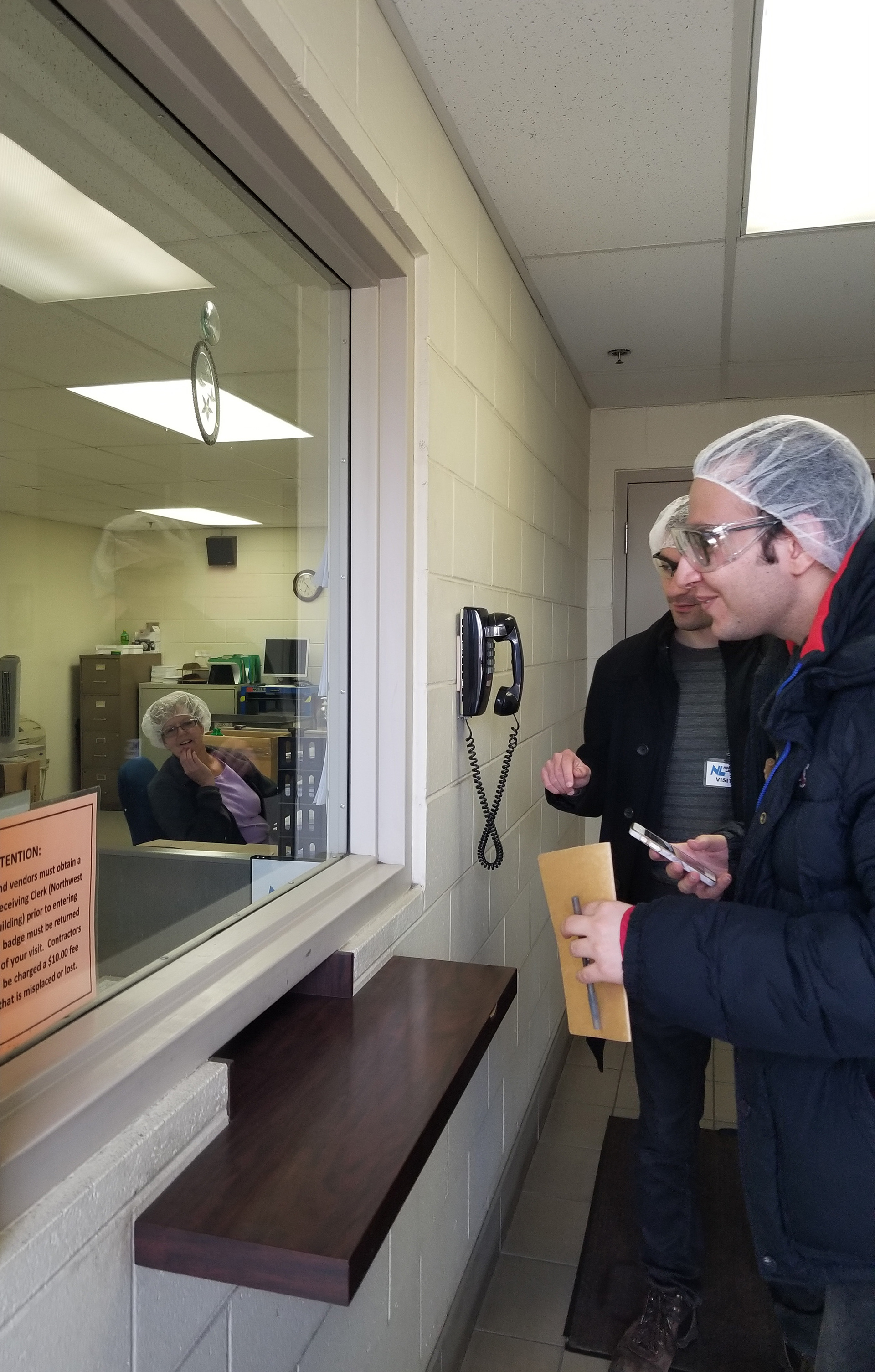

frameworks to identify opportunity areas
Getting a shipment from one facility to another is an incredibly complicated process. To aid our own understanding of the industry ecology, we created a journey map and a stakeholder map to visualize touchpoints and interactions throughout the process of booking a load.
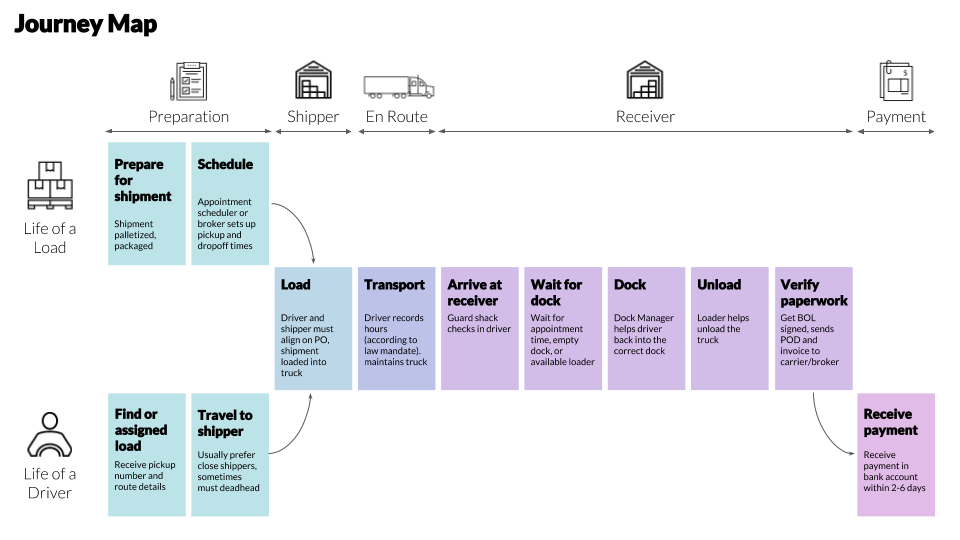
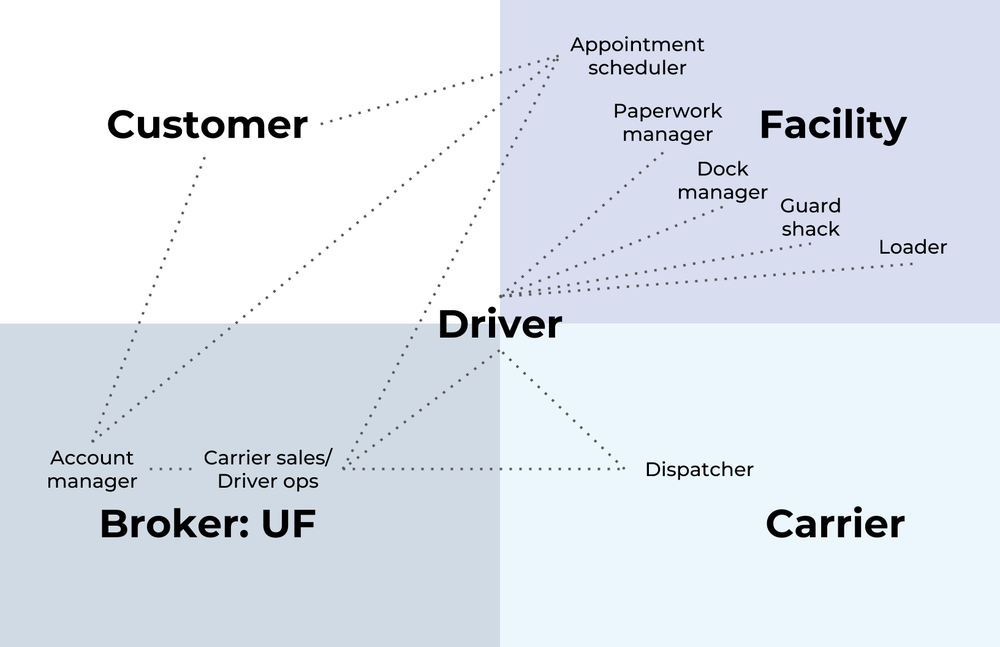
Based on our insights, we identified two compelling types of challenges specifically faced by employees at small facilities that could be solved by Uber Freight. We then mapped opportunity areas against those challenges and frequency of occurrence to explore the potential impact of each. After we identified the most strategic approach, we created a journey map to illustrate the most effect point for Uber Freight to intervene.
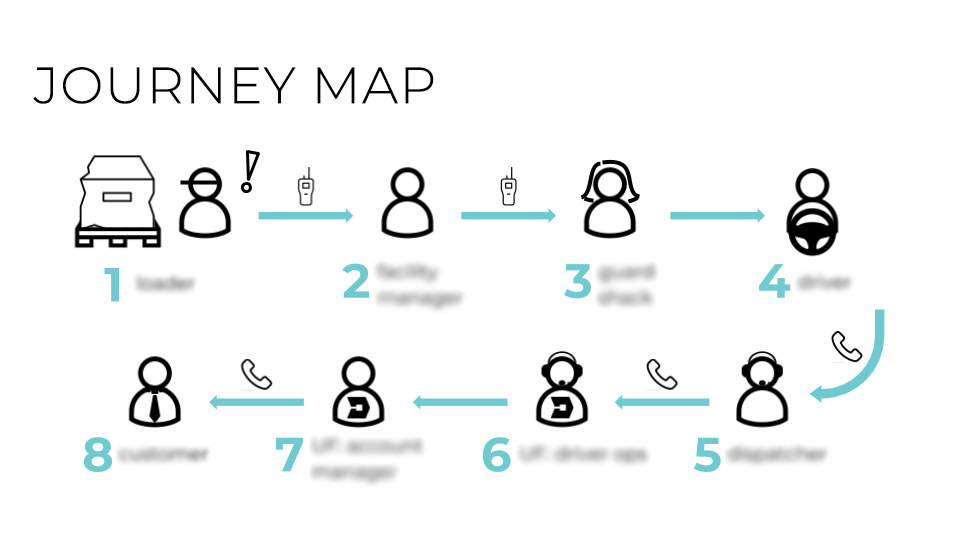

implementation model based on user needs
Though we identified a specific area for Uber Freight to design in, we saw the space as a stepping-stone to a larger opportunity to engage a wider audience. Thus, we developed a strategic implementation framework tailored to the types of stakeholders specific to the small facilities, agnostic to the product or service being deployed. This strategy focused on leveraging the potential challenges of creating technology for those individuals and framing them as opportunities for Uber to differentiate themselves in the market.
creating a larger impact
Our framework also highlights the unique business opportunity available to Uber Freight as a tech company in a very traditional, low-tech industry. Through starting with a smaller, more focused area, the company can gain a lot of trust from new users with a relatively low technological investment. From there, Uber Freight can then lower their barrier to entry for larger products and services they may create in the future, as well as increase driver app usage by building their credibility and name recognition in the industry.
